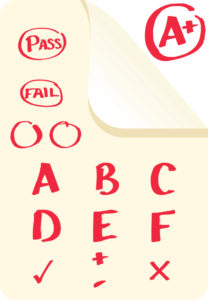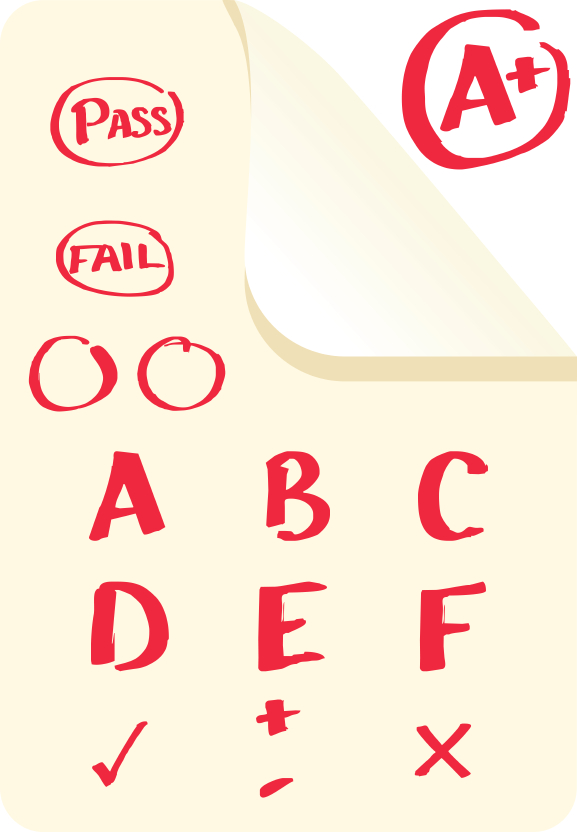
 Formal and informal assessments provide significant insight into students’ progress, curriculum effectiveness and teaching strategies. Although there has been recent parental pushback on overuse of standardized tests, the data collected from them does not drift off into the ether. One of the best ways to encourage parental and student buy-in for assessment is to explain how data from many kinds of tests is used to improve teaching.
Formal and informal assessments provide significant insight into students’ progress, curriculum effectiveness and teaching strategies. Although there has been recent parental pushback on overuse of standardized tests, the data collected from them does not drift off into the ether. One of the best ways to encourage parental and student buy-in for assessment is to explain how data from many kinds of tests is used to improve teaching.
When discussing data, it’s important to note that schools gather several types of data that is used in a number of ways. Standardized testing unearths district, school, and grade-level data; individual assessments give educators information on student performance in individual classes, and summative and formative assessments give teachers feedback on classroom instruction. Each of these very different data sets can be used by individual teachers, grade teams, and professional learning teams to inform and improve their classroom teaching.
Standardized tests gauge overall learning and identify knowledge gaps
Data from standardized testing gives district leaders, school administrators and teachers a global view of their students. As 2002 Maryland State Teacher of the Year Linda Eberhardt notes in her discussion of student data, this information gives teachers high-level insight into what students know. This allows teachers to understand the major gaps students might have in their learning before they’re in front of the classroom.
While administrators use that information to address curricular or teaching insufficiency, teachers can use knowledge gap information to identify subjects where they might need to devote additional teaching time, and to create individual assessments. Analytical assessment software help teachers anticipate student skill gaps, helping them to sort their classes in ways that enhance individualized student learning.
Individual assessments reveal each student’s needs
After reviewing standardized testing data, Eberhart encourages teachers to do individual assessments on their entering students to confirm standardized findings and acknowledge individual student needs. This data gives classroom educators a deep understanding of their students’ personalities and abilities, and even insight into their learning styles.
This allows the broader curriculum goals to be modified to reflect the individual needs of students and the overall class portrait the teacher has identified. As every teacher knows, classes have unique needs and personalities that have a significant influence on course design.
Summative assessments catch learning roadblocks
For teachers, the most frequently-used measure of student learning is summative assessment: grades on individual assignments, essays, and exams. This data gives provides information about individual function and classroom performance, and can be particularly good for helping teachers to identify learning roadblocks or overall curriculum dysfunction.
For example, if an individual student’s summative assessment is significantly different from previous test data, a teacher may want to look for underlying issues or problems. Sometimes this provides insight into something other than pedagogy: soft skill issues or non-education-related happenings that have a profound influence on student learning. This gives teachers an opportunity to practice empathy and attempt to get students back on track.
Summative assessment also informs curriculum and instruction
If an entire class does poorly, though, teachers may want to reexamine their teaching process to see if the student gap is the result of a failure to connect students with the material. According to Marcy Emberger, former director of the Maryland Assessment Consortium and former professional data development specialist, this should motivate teachers to consider revising or restructuring class materials or teaching strategies in order to ensure class learning goals are met.
These issues can be brought to team discussions or professional teaching communities in order to facilitate a non-judgmental conversation about improving classroom practice. Emberger suggests that teachers participate in a protocol that follows specific rules, with the teacher presenting the materials, assessment, and issues raised, followed by a team thinking time, discussion and questions (with the individual teacher removed from the discussion or present but silent). This results in a plan for the future, which may include reteaching material.
Formative assessments provide immediate feedback on lesson plans
A final, and perhaps most important, data set for teachers is collected through formative assessments. These are informal, low-stakes assessments using a thumbs up or thumbs down, the stoplight method, exit slips, or brief quizzes to measure learning immediately after lectures or classroom activities. Information gleaned from this process allows for quick modification to the next class’s plan and identifies learning gaps long before they show up in a summative assessment or become an issue in standardized testing.
By itself, data cannot solve America’s education problems; however, the collection of data at the standardized, formal, and informal assessment levels gives teachers a way to understand student needs, group students based on strengths and weaknesses, and design (and adjust) lesson plans to ensure that students continuously improve.
Monica Fuglei is a graduate of the University of Nebraska in Omaha and a current adjunct faculty member of Arapahoe Community College in Colorado, where she teaches composition and creative writing.
Categorized as: Tips for Teachers and Classroom Resources
Tagged as: Assessment Tools
